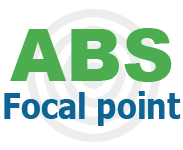
When do the rules apply?
When am I a user?
Rules on access and benefit-sharing apply to all users of genetic resources in the Netherlands. A “user” is a natural or legal person who utilises genetic resources or traditional knowledge associated with genetic resources. You are considered to be a user of genetic resources if your activities fall under the definition of utilisation.
User under the Nagoya Protocol
The Nagoya Protocol states: ”Utilization of genetic resources means to conduct research and development on the genetic and/or biochemical composition of genetic resources, including through the application of biotechnology”. If you are not conducting research and development, you are not considered to be a user under this definition. For example, trade in genetic resources is not considered to be utilisation when no research or development takes place. Whether or not the genetic material is destroyed afterwards is irrelevant. Genetic resources obtained under the conditions of the SMTA of the ITPGRFA are only provided for the purposes of research, breeding and training in the field of food and agriculture. If you use the material for other purposes than for food and agriculture, you are a user under the above definition. Provider countries may have established different conditions for different types of utilisation in their access legislation.
User under the EU ABS Regulation
‘Utilisation of genetic resources’ is defined in the Regulation (EU) No 511/2014 (the EU ABS Regulation, Article 3) and the Nagoya Protocol (Article 2) as “to conduct research and development (R&D) on the genetic and/or biochemical composition of genetic resources, including through the application of biotechnology, as defined in Article 2 of the Convention.”
For the EU ABS Regulation, both basic and applied research may be considered utilisation. If you are a user in this sense, the Dutch government will monitor your compliance with the rules stemming from EU Regulation 511/2014. This does not apply to genetic resources from the crops and forages covered by Annex I of the ITPGRFA that are received under the SMTA. For use of genetic resources not covered by Annex I, but received under the conditions of the SMTA of the ITPGRFA from countries that issue plant-genetic resources for food and agriculture, including those not listed in Annex I of the ITPGRFA, under the conditions of the SMTA, you are deemed to have fulfilled the obligations under the EU Regulation.
Research and development
The description of a genetic resource normally would also not amount to utilisation. However, if the description of a genetic resource is combined with research on that resource, i.e. to discover specific genetic and/or biochemical properties, this would qualify as utilisation in terms of the Protocol and the Regulation. As a type of ‘litmus test’, users should ask themselves whether what they are doing with the genetic resources creates new insight into characteristics of the genetic resource which is of (potential) benefit to the further process of product development. If this is the case, the activity goes beyond mere description, should be considered research, and therefore falls under the term ‘utilisation’.
For more information, consult section 2.3.3 of the Guidance and When am I a user under the EU ABS Regulation?
From when do these rules apply?
Importantly, the rules of the CBD and the Nagoya Protocol do not apply retroactively. This means that Access and Benefit-Sharing obligations do not apply to genetic resources that were in your possession before 28 December 1993, but may apply to all genetic resources acquired thereafter. If the country providing you with the genetic resources had or introduced rules or regulations for ABS after 1993, you have to comply or should have complied with them.
The compliance measures laid down in the Nagoya Protocol and implemented through EU Regulation 511/2014 do not apply to genetic resources already in your possession before 12 October 2014. The EU rules only apply to genetic resources that were obtained and used on or after 12 October 2014. In other words, Access and Benefit-Sharing obligations exist since the coming into force of the CBD, but EU obligations only since 12 October 2014.
